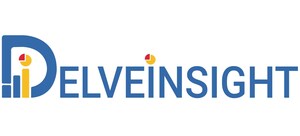The uveal melanoma market is small but strategically important, driven by significant unmet medical needs, few available treatments, and growing innovation. Targeted therapies and immunotherapies, especially those focused on GNAQ/GNA11 mutations and overcoming immune resistance, are seeing increased interest, although outcomes in advanced stages remain limited. Advances in prognostic tools that integrate histopathologic, molecular, and patient-specific markers are enhancing risk stratification, but a universally accepted standard is still lacking.
LAS VEGAS, Aug. 21, 2025 /PRNewswire/ -- DelveInsight's Uveal Melanoma Market Insights report includes a comprehensive understanding of current treatment practices, uveal melanoma emerging drugs, market share of individual therapies, and current and forecasted market size from 2020 to 2034, segmented into 7MM [the United States, the EU4 (Germany, France, Italy, and Spain) and the United Kingdom, and Japan].
Key Takeaways from the Uveal Melanoma Market Report
- According to DelveInsight's analysis, the market size for uveal melanoma in the 7MM is expected to grow significantly by 2034.
- The United States accounted for the highest uveal melanoma treatment market size in 7MM in 2024, in comparison to the other major markets, i.e., EU4 countries (Germany, France, Italy, and Spain), the United Kingdom, and Japan.
- Uveal melanoma is a rare cancer with an age-adjusted incidence of approximately 5 per million, affecting around 2,500 individuals annually in the US. Despite its low incidence, it is clinically significant due to its high risk of metastasis and limited treatment options in advanced stages.
- Up to 50% of individuals with uveal melanoma eventually develop metastatic disease. Metastases typically emerge within a median of three to five years following treatment of the primary tumor, and treatment at this stage is generally given with palliative intent.
- Leading uveal melanoma companies developing emerging therapies, such as Aura Biosciences, IDEAYA Biosciences, Replimune, Linnaeus Therapeutics, Novartis, TriSalus Life Sciences, and others, are developing new uveal melanoma treatment drugs that can be available in the uveal melanoma market in the coming years.
- The promising uveal melanoma therapies in the pipeline include Belzupacap sarotalocan, Darovasertib, RP2, LNS8801, DYP688, Nelitolimod, and others.
Discover the uveal melanoma new treatment @ New Treatments for Uveal Melanoma
Uveal Melanoma Market Dynamics
The uveal melanoma market dynamics are expected to change in the coming years. With the increasing incidence and high unmet need in uveal melanoma, particularly in metastatic settings where complex and personalized therapies are gaining focus, the limited treatment options create a strong opportunity for new therapies to enter and boost the market, supported further by active efforts from organizations to raise awareness and provide a clinical trial patient pool.
As potential therapies are being investigated for the treatment of uveal melanoma, it is safe to predict that the treatment space will significantly impact the uveal melanoma market during the forecast period. Moreover, the anticipated introduction of emerging therapies with improved efficacy and a further improvement in the diagnosis rate are expected to drive the growth of the uveal melanoma market in the 7MM.
However, several factors may impede the growth of the uveal melanoma market. To date, there is no efficient therapeutic algorithm for controlling metastatic uveal melanoma, which is responsible for a rapid fatal outcome in nearly 50% of patients; while immunotherapy agents such as immune checkpoint inhibitors, effective in cutaneous melanoma, have shown limited efficacy in uveal melanoma due to its distinct genetics, unique disease progression, and complex immune interactions, the currently approved therapies not only impose a significant cost burden on patients but also remain under post-marketing surveillance, with the risk of regulatory withdrawal if unforeseen adverse outcomes emerge in real-world use.
Moreover, uveal melanoma treatment poses a significant economic burden and disrupts patients' overall well-being and QOL. Furthermore, the uveal melanoma market growth may be offset by failures and discontinuation of emerging therapies, unaffordable pricing, market access and reimbursement issues, and a shortage of healthcare specialists. In addition, the undiagnosed, unreported cases and the unawareness about the disease may also impact the uveal melanoma market growth.
Uveal Melanoma Treatment Market
The management of uveal melanoma is individualized based on factors such as tumor size, location, and the patient's potential for preserving vision, with surgery continuing to play a central role. Surgical approaches include local tumor resection, enucleation, and, in more advanced cases, exenteration. Enucleation is generally performed for large tumors or when there is no possibility of saving vision, while exenteration is reserved for cases with significant local invasion.
Radiation therapy is commonly used either as an alternative or in conjunction with surgery. This may involve external beam techniques, such as charged-particle therapy or Gamma Knife radiosurgery, or internal approaches, most often plaque brachytherapy, which delivers focused radiation through a radioactive disc placed on the eye's outer surface.
Less frequently, thermal methods like photocoagulation and thermotherapy are used, especially for smaller tumors, to damage cancer cells by cutting off their blood supply or applying heat. In certain scenarios, particularly with small or uncertain lesions, clinicians may opt for active surveillance, especially when the tumor affects the patient's only seeing eye. Treatment decisions aim to strike a balance between controlling the tumor, preserving vision, and maintaining quality of life.
KIMMTRAK represents a notable advancement in treating metastatic uveal melanoma, offering a proven survival benefit over traditional options. However, its effectiveness is restricted to patients with the HLA-A*02:01 genotype, limiting its use to a specific genetic group. This limitation highlights a key challenge in current immunotherapies and emphasizes the pressing need for broader treatment strategies that can address the genetic diversity of the uveal melanoma population.
To know more about uveal melanoma treatment options, visit @ Approved Uveal Melanoma Drugs
Uveal Melanoma Pipeline Therapies and Key Companies
The pipeline for uveal melanoma is growing, with several key players, including Aura Biosciences (belzupacap sarotalocan), IDEAYA Biosciences (darovasertib), Replimune (RP2), Linnaeus Therapeutics (LNS8801), Novartis (DYP688), and others in clinical development.
Darovasertib is a highly selective and potent inhibitor of protein kinase C (PKC) currently in development for the treatment of both primary and metastatic uveal melanoma. It has been granted Breakthrough Therapy Designation (BTD) by the US FDA for use as a neoadjuvant therapy in patients with primary uveal melanoma for whom enucleation is advised. Additionally, it has received Fast Track designation for use in combination with crizotinib in adults with metastatic uveal melanoma. A Phase II/III registration-enabling trial evaluating this combination as a first-line treatment for HLA-A2-negative metastatic uveal melanoma is ongoing. Darovasertib also holds Orphan Drug Designation from the FDA for uveal melanoma, including its metastatic form.
In April 2025, IDEAYA Biosciences reported a successful FDA Type D meeting regarding the Phase III registrational trial for darovasertib as a neoadjuvant therapy in primary uveal melanoma, paving the way for potential regulatory approval. The company plans to launch this randomized Phase III trial in the first half of 2025.
In March 2025, the FDA granted BTD to darovasertib as a potential first-in-class PKC inhibitor for adults with primary uveal melanoma where enucleation is recommended.
DYP688 is an antibody-drug conjugate (ADC), consisting of an antibody linked to a cytotoxic agent. The antibody targets PMEL17, a protein found on GNAQ/11-mutated melanoma cells. Upon binding to PMEL17, DYP688 facilitates the delivery of the anticancer drug to the tumor cells.
In May 2025, Novartis presented early clinical data from the first-in-human study of DYP688 in patients with metastatic uveal melanoma and other GNAQ/11-mutant melanomas.
RP2, developed by Replimune, is an advanced oncolytic virus therapy based on RP1, their lead candidate derived from a novel strain of herpes simplex virus. RP2 is engineered to express GM-CSF and a fusogenic protein (GALV-GP-R) to enhance tumor cell destruction and stimulate systemic anti-tumor immunity. In addition to these components, RP2 also expresses a molecule resembling an anti-CTLA-4 antibody. This design enables focused delivery of these immunomodulatory proteins to tumors and nearby lymph nodes, aiming to boost immune response at the tumor site while minimizing systemic toxicity.
The anticipated launch of these emerging therapies are poised to transform the uveal melanoma market landscape in the coming years. As these cutting-edge therapies continue to mature and gain regulatory approval, they are expected to reshape the uveal melanoma market landscape, offering new standards of care and unlocking opportunities for medical innovation and economic growth.
Discover more about uveal melanoma marketed and pipeline drugs @ Uveal Melanoma Clinical Trials
Recent Developments in the Uveal Melanoma Market
- In May 2025, Novartis announced presentation of results from the first-in-human study of DYP688 in patients with metastatic uveal melanoma and other GNAQ/11 mutant melanomas.
- In April 2025, IDEAYA Biosciences announced a successful FDA Type D meeting on the Phase III registrational trial design that will assess the safety and efficacy of darovasertib for potential regulatory approval as neoadjuvant therapy for primary uveal melanoma. IDEAYA is targeting to initiate the Phase III randomized clinical trial evaluating neoadjuvant darovasertib in primary uveal melanoma in the first half of 2025.
Uveal Melanoma Overview
Uveal melanoma is a rare yet aggressive form of cancer and represents the most common primary intraocular malignancy in adults, making up around 83% of all ocular melanomas. It originates from melanocytes in the uveal tract of the eye, which includes the iris, ciliary body, and choroid, with nearly 90% of cases arising in the choroid. Typically affecting one eye and diagnosed between the ages of 50 and 70, uveal melanoma is biologically and clinically distinct from cutaneous melanoma, despite both stemming from melanocytes. Unlike cutaneous melanoma, it is generally not linked to ultraviolet radiation and is most often driven by mutations in GNAQ and GNA11, rather than BRAF or NRAS mutations.
Uveal melanoma is characterized by a unique molecular profile, a specific pattern of metastatic spread, and limited treatment options once metastasis occurs. Advances in diagnostic imaging and the specialized expertise of ocular oncologists have greatly improved detection. Common diagnostic tools include ocular ultrasound, MRI, CT scans, and fluorescein angiography. In more complex cases, particularly to rule out metastasis, a fine needle aspiration biopsy may be necessary, although this procedure carries risks such as retinal detachment and vitreous hemorrhage.
Smaller choroidal lesions that may resemble benign nevi are often monitored rather than treated immediately, as distinguishing them from early melanomas can be challenging, and malignant transformation is relatively rare. Prognosis is further refined through molecular and cytogenetic analysis, with key indicators including BAP1 loss (often associated with monosomy 3), chromosome 8q gains, and epithelioid cell morphology—factors linked to higher metastatic risk, immune evasion, and poorer survival outcomes. Tumor size and histological features also contribute to risk evaluation, with larger, thicker tumors and epithelioid cell types indicating more aggressive behavior. Consequently, molecular profiling is essential for determining surveillance intensity and shaping therapeutic strategies after local disease control.
Uveal Melanoma Epidemiology Segmentation
The uveal melanoma epidemiology section provides insights into the historical and current uveal melanoma patient pool and forecasted trends for the 7MM. It helps recognize the causes of current and forecasted patient trends by exploring numerous studies and views of key opinion leaders.
The uveal melanoma market report proffers epidemiological analysis for the study period 2020–2034 in the 7MM, segmented into:
- Total Incident Cases of Uveal Melanoma
- Site-specific Incident Cases of Uveal Melanoma
- Stage-specific Incident Cases of Uveal Melanoma
- Mutation-specific Incident Cases of Uveal Melanoma
- Total Treated Cases of Uveal Melanoma
Uveal Melanoma Market Report Metrics |
Details |
Study Period |
2020–2034 |
Coverage |
7MM [The United States, the EU4 (Germany, France, Italy, and Spain) the United Kingdom, and Japan]. |
Key Uveal Melanoma Companies |
Aura Biosciences, IDEAYA Biosciences, Replimune, Linnaeus Therapeutics, Novartis, TriSalus Life Sciences, Immunocore, Delcath Systems, and others |
Key Uveal Melanoma Therapies |
Belzupacap sarotalocan, Darovasertib, RP2, LNS8801, DYP688, Nelitolimod, KIMMTRAK, HEPZATO KIT, and others |
Scope of the Uveal Melanoma Market Report
- Therapeutic Assessment: Uveal Melanoma current marketed and emerging therapies
- Uveal Melanoma Market Dynamics: Key Market Forecast Assumptions of Emerging Uveal Melanoma Drugs and Market Outlook
- Competitive Intelligence Analysis: SWOT analysis and Market entry strategies
- Unmet Needs, KOL's views, Analyst's views, Uveal Melanoma Market Access and Reimbursement
Download the report to understand which factors are driving uveal melanoma therapeutics market trends @ Uveal Melanoma Market Trends
Table of Contents
1 |
Key Insights |
2 |
Report Introduction |
3 |
Executive Summary of Uveal Melanoma |
4 |
Key Events |
5 |
Epidemiology and Market Methodology |
6 |
Uveal Melanoma: Market Overview at a Glance |
6.1 |
Market Share (%) Distribution of Uveal Melanoma by Therapies in 2024 |
6.2 |
Market Share (%) Distribution of Uveal Melanoma by Therapies in 2034 |
7 |
Disease Background and Overview: Uveal Melanoma |
7.1 |
Introduction of Uveal Melanoma |
7.2 |
Risk Factors Related to Uveal Melanoma |
7.3 |
Symptoms Related to Uveal Melanoma |
7.4 |
Pathophysiology and Disease Pathways |
7.5 |
Diagnostic Tests |
8 |
Treatment and Guidelines of Uveal Melanoma |
8.1 |
Current Treatment Landscape |
9 |
Epidemiology and Patient Population |
9.1 |
Key Findings |
9.2 |
Assumptions and Rationale |
9.3 |
Total Prevalent Cases of Uveal Melanoma in the 7MM |
9.4 |
The US |
9.4.1 |
Total Incident Cases of Uveal Melanoma in the US |
9.4.2 |
Site-specific Incident Cases of Uveal Melanoma in the US |
9.4.3 |
Stage-specific Incident Cases of Uveal Melanoma in the US |
9.4.4 |
Mutation-specific Incident Cases of Uveal Melanoma in the US |
9.4.5 |
Total Treated Cases of Uveal Melanoma in the US |
9.5 |
EU4 and the UK |
9.6 |
Japan |
10 |
Patient Journey |
11 |
Marketed Drugs of Uveal Melanoma |
11.1 |
Key Competitors |
11.2 |
KIMMTRAK (tebentafusp-tebn): Immunocore |
11.2.1 |
Product Description |
11.2.2 |
Regulatory Milestones |
11.2.3 |
Other Developmental Activities |
11.2.4 |
Clinical Development |
11.2.4.1 |
Clinical Trials Information |
11.2.5 |
Safety and Efficacy |
11.2.6 |
Analyst View |
11.3 |
HEPZATO KIT (melphalan): Delcath Systems |
List to be continued in the report… |
|
12 |
Emerging Drugs of Uveal Melanoma |
12.1 |
Darovasertib: IDEAYA Biosciences |
12.1.1 |
Product Description |
12.1.2 |
Other Developmental Activities |
12.1.3 |
Clinical Development |
12.1.3.1 |
Clinical Trials Information |
12.1.4 |
Safety and Efficacy |
12.1.5 |
Analyst View |
12.2 |
DYP688: Novartis |
List to be continued in the report… |
|
13 |
Uveal Melanoma: 7MM Analysis |
13.1 |
Key Findings |
13.2 |
Market Outlook |
13.3 |
Conjoint Analysis |
13.4 |
Key Market Forecast Assumptions |
13.4.1 |
Cost Assumptions and Rebates |
13.4.2 |
Pricing Trends |
13.4.3 |
Analogue Assessment |
13.4.4 |
Launch Year and Therapy Uptakes |
13.5 |
Total Market Size of Uveal Melanoma in the 7MM |
13.6 |
The US |
13.6.1 |
Total Market Size of Uveal Melanoma in the US |
13.6.2 |
Total Market Size of Uveal Melanoma by Therapies in the US |
13.7 |
EU4 and the UK |
13.8 |
Japan |
14 |
Unmet Needs of Uveal Melanoma |
15 |
SWOT Analysis of Uveal Melanoma |
16 |
KOL Views of Uveal Melanoma |
17 |
Market Access and Reimbursement of Uveal Melanoma |
18 |
Bibliography |
19 |
Report Methodology |
Related Reports
Uveal Melanoma Pipeline Insight – 2025 report provides comprehensive insights about the pipeline landscape, pipeline drug profiles, including clinical and non-clinical stage products, and the key uveal melanoma companies, including Novartis Pharmaceuticals, Foghorn Therapeutics, TriSalus Life Sciences, Inc., Bristol Myers Squibb, Array BioPharma, Ono Pharmaceutical, AstraZeneca, Roche, IDEAYA Biosciences, Merck & Co., GlaxoSmithKline, Janssen, among others.
Metastatic Uveal Melanoma Market
Metastatic Uveal Melanoma Market Insights, Epidemiology, and Market Forecast – 2034 report delivers an in-depth understanding of the disease, historical and forecasted epidemiology, as well as the market trends, market drivers, market barriers, and key metastatic uveal melanoma companies, including Bristol-Myers Squibb, Merck & Co., Verastem Oncology, AstraZeneca, Novartis, BioMed Valley Discoveries, Miltenyi Biomedicine GmbH, IDEAYA Biosciences, Vanquish Oncology, Viralytics, Hoffmann-La Roche, Bellicum Pharmaceuticals, Linnaeus Therapeutics, Immunocore, among others.
Melanoma Market Insights, Epidemiology, and Market Forecast – 2034 report deliver an in-depth understanding of the disease, historical and forecasted epidemiology, as well as the market trends, market drivers, market barriers, and key melanoma companies including Incyte Corporation, Merck Sharp & Dohme LLC, Pfizer, Bristol-Myers Squibb, Medarex, BioVex Limited, Amgen, IO Biotech, Celgene, among others.
Metastatic Melanoma Market Insights, Epidemiology, and Market Forecast – 2034 report deliver an in-depth understanding of the disease, historical and forecasted epidemiology, as well as the market trends, market drivers, market barriers, and key metastatic melanoma companies including Cancer Insight LLC, Elios Therapeutics LLC, Evaxion Biotech A/S, Merck Sharp & Dohme LLC, Novartis Pharmaceuticals, InxMed (Shanghai) Co., Ltd, Aivita Biomedical Inc., Hoffmann-La Roche, Idera Pharmaceuticals, Iovance Biotherapeutics Inc., Eisai Inc., Biocad, Myrexis Inc., Pain Therapeutics, Altor BioScience, among others.
About DelveInsight
DelveInsight is a leading Business Consultant and Market Research firm focused exclusively on life sciences. It supports pharma companies by providing comprehensive end-to-end solutions to improve their performance. Get hassle-free access to all the healthcare and pharma market research reports through our subscription-based platform PharmDelve.
Contact Us
Shruti Thakur
info@delveinsight.com
+14699457679
www.delveinsight.com
Logo: https://mma.prnewswire.com/media/1082265/3528414/DelveInsight_Logo.jpg






Share this article